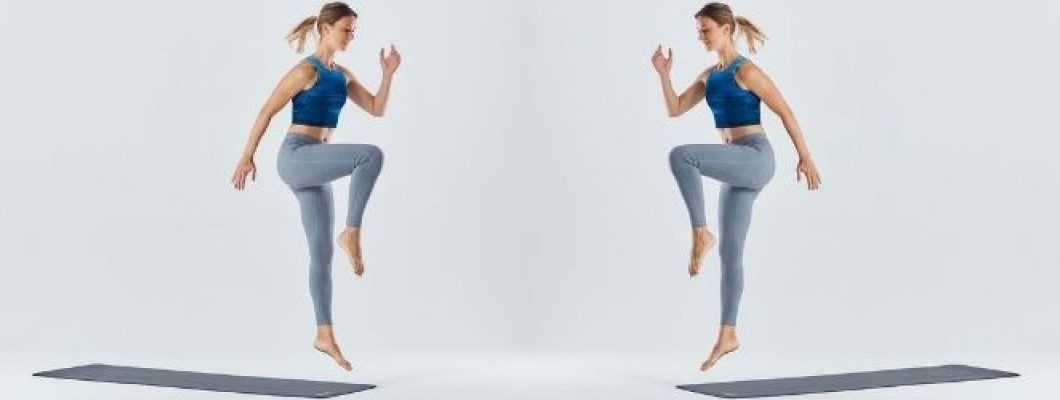
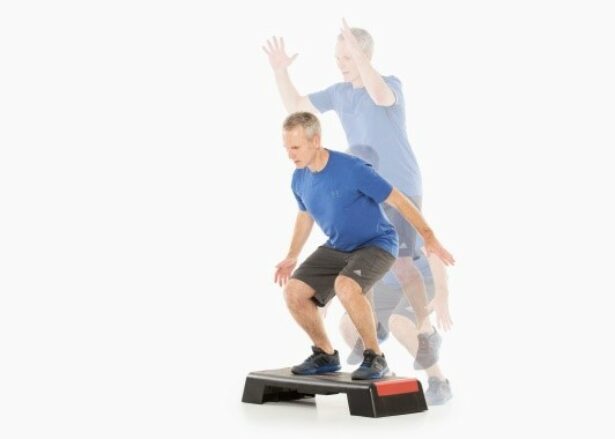
Besides the very effective BLACKROLL® training, fascial training can also be intensified with special fascial movements. Fascial structures cannot only be loosened, but also “strengthened”. “Strengthening the fascia” means improving the elasticity and the tear-resistance of the fascial structures and in addition also improving the ligaments’, tendons’ and joint-capsules’ capacity to store kinetic energy. According to fascia experts, these are all part of the fascial structures. This way, athletic movements become more economical, because they require less muscle energy and there is a lower risk of getting injured.
If you have ever engaged with the topic of fascial movements, you will have noticed that it is all about bouncing and rocking movements. Even when it comes to stretching, bouncing movements are allowed, because it has been found that they have a positive effect on the fascia. This shows that there really are no wrong movements. Every movement simply has to be connected to its actual goal. For example, passive stretching is aimed at the detonization and the prevention and reduction of inflammations, while active bouncing stretching is aimed at strengthening and stimulating fascial structures.
However: a distinction must be made. Bouncing is not always the same as bouncing and jumping is not always the same as jumping! In order to really activate fascial structures, there are some details you will have to take into account while jumping and bouncing.
To reach the fascia in the best way possible, it takes maximum pre-stretching, many changes of vectors and mini bounces (pictures by Mira Hampel in: Fascia meets muscle – Meyer & Meyer publishing company 2017)
More information about the authors:
www.concept-rossmann.com www.lamar-functional-training.de
Sources:
· Roßmann, M./Lowery, L. (2017). Faszie trifft Muskel Aachen: Meyer & Meyer
· Schleip, R. & Baker, A. (2016). Faszien in Sport und Alltag (1.Auflage). München: riva
· Schleip, R., Findley, T., Chaitow, L. & Huijing, P. (Hrsg). (2012): Lehrbuch Faszien Grundlagen – Forschung – Behandlung (1.Auflage). München: Urban & Fischer.

Pictures - To reach the fascia in the best way possible, it takes maximum pre-stretching, many changes of vectors and mini bounces (pictures by Mira Hampel in: Fascia meets muscle – Meyer & Meyer publishing company 2017).
If you want to put the main focus of stretching on activating fascia, there are three important aspects to keep in mind:
1. Getting into a maximum pre-stretching position
2. Doing mini bouncing movements in this position
3. Additionally constantly making little changes of angles in order to:
a) give as many different impulses as possible to the fascia (fasciae love been stretched in all directions)
b) reaching the best, individual stretching position.
It is crucial that the change of directions happens with maximum acceleration. Only this way it can be guaranteed that the fibroblasts (the cells that are responsible for the new construction of collages) are stimulated in a positive way. Sadly, this important detail is overlooked by many trainers and athletes.
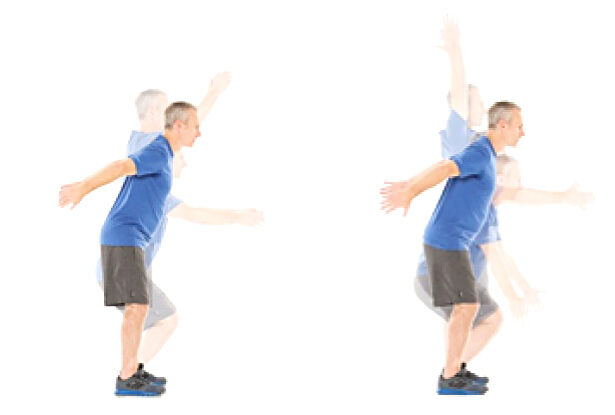
Picture 1: Normal swinging: according to science this form of swinging does not have a positive impact on the fibro blasts. Experience, however, shows that after just a short period of time, most patients notice positive effects.
Picture 2: Only with slight, swinging movements + acceleration of movements at the movement turning point, a positive activation of the fibro blasts can be identified.
When it comes to swinging movements, science says that an optimization of the fascial effects is only possible with
· maximum pre-stretching
· constant change of angles
· and a maximum acceleration in the reversal of movements
However, in reality you often have to forgo many of these very challenging movements, because movement laymen or people in rehabilitation are not able to perform them. My experience and the feedback of many therapists has shown that simple swinging without acceleration can already have an outstanding effect on the movability, the pain perception and the general mood. Personally, these effects are more important to me than the question whether this can be traced back to fasciae. Which brings us to another, not yet scientifically explained observation. The combination of Blackroll training and fascial swinging and stretching with or without small tools has the most positive effects. That is my “7 years long-term observation” after over 400 courses!
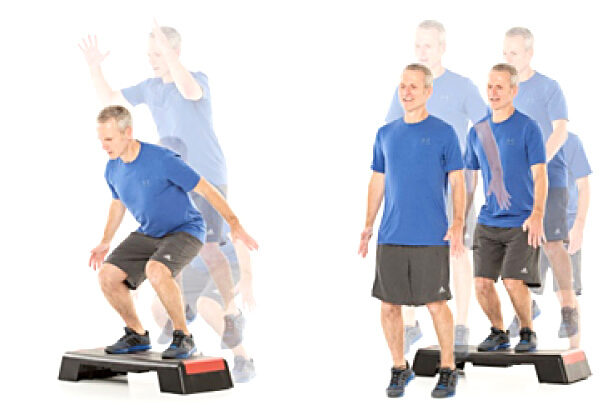
Picture 1: Jumping with smooth landing, big changes of angles in the knee joint and a long contact time with the ground
Picture 2: Jumping with hard landing, less changes of angles in the knee and a short contact time with the ground
Generally, one can say: If you want to give tendons, ligaments and joint capsules a positive impulse, you need to regularly hop and jump. There a differences in the execution and the effects on the muscles and fascia. Slow jumping with big changes of angles in the knee joint and a long contact time with the ground trains the slow twitch fibres and the collagenous muscle skin. If you jump at a faster pace with less change of angles in the knee joint (remaining stiff) and short contact time with the ground, bouncing right up again, you will train the fast twitch fibres as well as the tendons, ligaments and joint capsules.
The speed and the stiffness of the execution are therefore crucial, depending on which structures you want to reach. As always, it needs to be noted that every form of training trains both muscles and fasciae. We only differentiate between a more muscle focused and a more fascia focused training and it is the small but noticeable differences in how we move that make the difference.
In our book Fascia meets muscle- Meyer & Meyer publishing company 2017, as well as in our e-learning program in cooperation with the company ARTZT, Lamar Lowery, personal trainer and functional training expert, presents many classic, functional exercises with small tools, which I change in a way that shifts the focus more on to fascial structures.

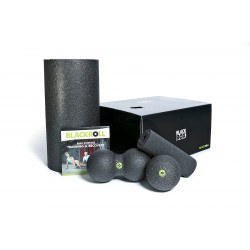
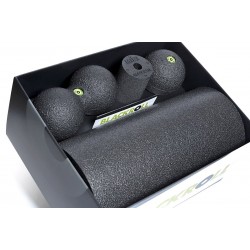
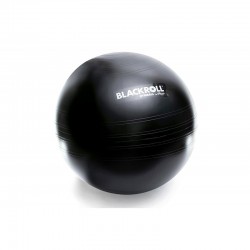


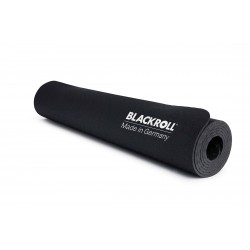
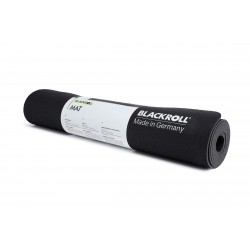
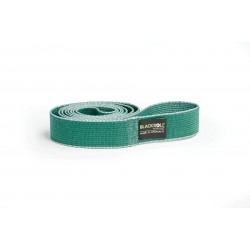
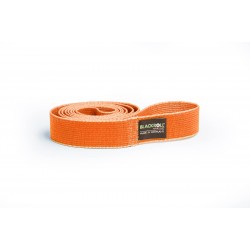


27 Comment(s)
Could you elaborate on the observed positive effects of combining Blackroll training with fascial swinging and stretching, and how this combination enhances movability, pain perception, and overall mood based on your long-term observation? regards <a href="https://ble.telkomuniversity.ac.id/">Telkom University</a>
Các trò chơi của FB88 rất dễ hiểu, tôi có thể chơi ngay mà không cần tìm hiểu quá nhiều.\r\nTôi rất thích các trò chơi trên FB88, luôn có những sự kiện thú vị để tham gia.\r\nChức năng của nền tảng rất ổn định, gần như không có hiện tượng giật lag.
FB88 có rất nhiều trò chơi casino trực tuyến, tôi rất thích thử nghiệm các trò chơi mới.\r\nFB88 luôn cung cấp các sản phẩm game chất lượng cao và dịch vụ khách hàng tốt.\r\nFB88 có nhiều loại game phong phú, đáp ứng nhu cầu của mọi người chơi.
FB88 cung cấp một nền tảng rất dễ sử dụng, tôi chưa bao giờ gặp vấn đề với giao diện.\r\nTôi rất thích cách họ chăm sóc người chơi, mọi vấn đề đều được giải quyết nhanh chóng.\r\nFB88 cung cấp rất nhiều cách để nạp và rút tiền, đáp ứng nhu cầu của mọi người chơi.
FB88 có nhiều loại game phong phú, đáp ứng nhu cầu của mọi người chơi.\r\nTôi thích các game cá cược thể thao trên FB88, tỷ lệ cược luôn rất hợp lý.\r\nTrò chơi trên FB88 rất dễ chơi, quy tắc rõ ràng và dễ hiểu.
Tôi rất thích các trò chơi live casino của FB88, họ mang lại cảm giác như đang chơi trực tiếp tại casino.\r\nCác trò chơi của FB88 rất dễ hiểu, tôi có thể chơi ngay mà không cần tìm hiểu quá nhiều.\r\nMức độ bảo mật của nền tảng rất cao, khiến tôi cảm thấy an tâm hơn khi chơi.
LiveBet là một nền tảng giải trí trực tuyến sáng tạo, cung cấp cược thể thao trực tiếp và nhiều tính năng tương tác. Dù bạn là fan của bóng đá, bóng rổ hay các giải đấu eSports, LiveBet đều mang đến cho bạn trải nghiệm cược hấp dẫn. Với hệ thống cập nhật tỷ lệ cược nhanh chóng, bạn có thể cược trong suốt trận đấu và tận dụng mọi cơ hội chiến thắng. Các phương thức thanh toán an toàn và dịch vụ khách hàng 24/7 đảm bảo bạn chơi mà không lo lắng. Tham gia LiveBet ngay hôm nay để trải nghiệm cược trực tuyến tiên tiến nhất!
Trường Tiểu học Nguyễn Trung Trực được thành lập năm 1985 có địa chỉ tại 9A Phạm Hồng Thái, phường Nguyễn Trung Trực, quận Ba Đình, Hà Nội (Nay thành phường Trúc Bạch). Trường hoạt động dưới sự quản lý của UBND quận Ba Đình và Phòng Giáo dục và Đào tạo Ba Đình. Trường được xây dựng khang trang trên diện tích hơn 3000 m2 với đủ các phòng học và phòng chức năng cho các hoạt động học tập, vui chơi, giải trí của học sinh.\r\nĐịa chỉ: Số 9A Phạm Hồng Thái - Ba Đình - Hà Nội\r\nEmail: s666@s666s666s.com\r\nwebsite: Https://s666s666s.com/\r\nĐiện thoại: 438261441
Trường Tiểu học Nguyễn Trung Trực được thành lập năm 1985 có địa chỉ tại 9A Phạm Hồng Thái, phường Nguyễn Trung Trực, quận Ba Đình, Hà Nội (Nay thành phường Trúc Bạch). Trường hoạt động dưới sự quản lý của UBND quận Ba Đình và Phòng Giáo dục và Đào tạo Ba Đình. Trường được xây dựng khang trang trên diện tích hơn 3000 m2 với đủ các phòng học và phòng chức năng cho các hoạt động học tập, vui chơi, giải trí của học sinh.\r\nĐịa chỉ: Số 9A Phạm Hồng Thái - Ba Đình - Hà Nội\r\nEmail: s666@s666s666s.com\r\nwebsite: Https://s666s666s.com/\r\nĐiện thoại: 438261441
Trường Tiểu học Nguyễn Trung Trực được thành lập năm 1985 có địa chỉ tại 9A Phạm Hồng Thái, phường Nguyễn Trung Trực, quận Ba Đình, Hà Nội (Nay thành phường Trúc Bạch). Trường hoạt động dưới sự quản lý của UBND quận Ba Đình và Phòng Giáo dục và Đào tạo Ba Đình. Trường được xây dựng khang trang trên diện tích hơn 3000 m2 với đủ các phòng học và phòng chức năng cho các hoạt động học tập, vui chơi, giải trí của học sinh.\r\nĐịa chỉ: Số 9A Phạm Hồng Thái - Ba Đình - Hà Nội\r\nEmail: s666@s666s666s.com\r\nwebsite: Https://s666s666s.com/\r\nĐiện thoại: 438261441
Trường Tiểu học Nguyễn Trung Trực được thành lập năm 1985 có địa chỉ tại 9A Phạm Hồng Thái, phường Nguyễn Trung Trực, quận Ba Đình, Hà Nội (Nay thành phường Trúc Bạch). Trường hoạt động dưới sự quản lý của UBND quận Ba Đình và Phòng Giáo dục và Đào tạo Ba Đình. Trường được xây dựng khang trang trên diện tích hơn 3000 m2 với đủ các phòng học và phòng chức năng cho các hoạt động học tập, vui chơi, giải trí của học sinh.\r\nĐịa chỉ: Số 9A Phạm Hồng Thái - Ba Đình - Hà Nội\r\nEmail: s666@s666s666s.com\r\nwebsite: Https://s666s666s.com/\r\nĐiện thoại: 438261441
Trường Tiểu học Nguyễn Trung Trực được thành lập năm 1985 có địa chỉ tại 9A Phạm Hồng Thái, phường Nguyễn Trung Trực, quận Ba Đình, Hà Nội (Nay thành phường Trúc Bạch). Trường hoạt động dưới sự quản lý của UBND quận Ba Đình và Phòng Giáo dục và Đào tạo Ba Đình. Trường được xây dựng khang trang trên diện tích hơn 3000 m2 với đủ các phòng học và phòng chức năng cho các hoạt động học tập, vui chơi, giải trí của học sinh.\r\nĐịa chỉ: Số 9A Phạm Hồng Thái - Ba Đình - Hà Nội\r\nEmail: s666@s666s666s.com\r\nwebsite: Https://s666s666s.com/\r\nĐiện thoại: 438261441
Trường Tiểu học Nguyễn Trung Trực được thành lập năm 1985 có địa chỉ tại 9A Phạm Hồng Thái, phường Nguyễn Trung Trực, quận Ba Đình, Hà Nội (Nay thành phường Trúc Bạch). Trường hoạt động dưới sự quản lý của UBND quận Ba Đình và Phòng Giáo dục và Đào tạo Ba Đình. Trường được xây dựng khang trang trên diện tích hơn 3000 m2 với đủ các phòng học và phòng chức năng cho các hoạt động học tập, vui chơi, giải trí của học sinh.\r\nĐịa chỉ: Số 9A Phạm Hồng Thái - Ba Đình - Hà Nội\r\nEmail: s666@s666s666s.com\r\nwebsite: Https://s666s666s.com/\r\nĐiện thoại: 438261441
Trường Tiểu học Nguyễn Trung Trực được thành lập năm 1985 có địa chỉ tại 9A Phạm Hồng Thái, phường Nguyễn Trung Trực, quận Ba Đình, Hà Nội (Nay thành phường Trúc Bạch). Trường hoạt động dưới sự quản lý của UBND quận Ba Đình và Phòng Giáo dục và Đào tạo Ba Đình. Trường được xây dựng khang trang trên diện tích hơn 3000 m2 với đủ các phòng học và phòng chức năng cho các hoạt động học tập, vui chơi, giải trí của học sinh.\r\nĐịa chỉ: Số 9A Phạm Hồng Thái - Ba Đình - Hà Nội\r\nEmail: s666@s666s666s.com\r\nwebsite: Https://s666s666s.com/\r\nĐiện thoại: 438261441
Trường Tiểu học Nguyễn Trung Trực được thành lập năm 1985 có địa chỉ tại 9A Phạm Hồng Thái, phường Nguyễn Trung Trực, quận Ba Đình, Hà Nội (Nay thành phường Trúc Bạch). Trường hoạt động dưới sự quản lý của UBND quận Ba Đình và Phòng Giáo dục và Đào tạo Ba Đình. Trường được xây dựng khang trang trên diện tích hơn 3000 m2 với đủ các phòng học và phòng chức năng cho các hoạt động học tập, vui chơi, giải trí của học sinh.\r\nĐịa chỉ: Số 9A Phạm Hồng Thái - Ba Đình - Hà Nội\r\nEmail: s666@s666s666s.com\r\nwebsite: Https://s666s666s.com/\r\nĐiện thoại: 438261441
Trường Tiểu học Nguyễn Trung Trực được thành lập năm 1985 có địa chỉ tại 9A Phạm Hồng Thái, phường Nguyễn Trung Trực, quận Ba Đình, Hà Nội (Nay thành phường Trúc Bạch). Trường hoạt động dưới sự quản lý của UBND quận Ba Đình và Phòng Giáo dục và Đào tạo Ba Đình. Trường được xây dựng khang trang trên diện tích hơn 3000 m2 với đủ các phòng học và phòng chức năng cho các hoạt động học tập, vui chơi, giải trí của học sinh.\r\nĐịa chỉ: Số 9A Phạm Hồng Thái - Ba Đình - Hà Nội\r\nEmail: s666@s666s666s.com\r\nwebsite: Https://s666s666s.com/\r\nĐiện thoại: 438261441
Trường Tiểu học Nguyễn Trung Trực được thành lập năm 1985 có địa chỉ tại 9A Phạm Hồng Thái, phường Nguyễn Trung Trực, quận Ba Đình, Hà Nội (Nay thành phường Trúc Bạch). Trường hoạt động dưới sự quản lý của UBND quận Ba Đình và Phòng Giáo dục và Đào tạo Ba Đình. Trường được xây dựng khang trang trên diện tích hơn 3000 m2 với đủ các phòng học và phòng chức năng cho các hoạt động học tập, vui chơi, giải trí của học sinh.\r\nĐịa chỉ: Số 9A Phạm Hồng Thái - Ba Đình - Hà Nội\r\nEmail: s666@s666s666s.com\r\nwebsite: Https://s666s666s.com/\r\nĐiện thoại: 438261441
Loved how actionable this is. Definitely a reference post for me.
Great effort and very practical. This gives me a stronger foundation.
Spot on with this write-up, I truly believe that this website needs a lot more attention. I\'ll probably be back again to read more, thanks for the advice!
I simply could not depart your site before suggesting that I extremely enjoyed the standard info a person supply in your visitors? Is gonna be back regularly to check up on new posts
I visited multiple sites but the audio feature for audio songs existing at this web page is actually marvelous.
I got what you mean, appreciate it for putting up. Woh I am lucky to find this website through google.
I want to to thank you for this wonderful read!! I definitely loved every bit of it. I\'ve got you book-marked to look at new things you
I visited several web sites however the audio quality for audio songs present at this web site is truly superb.
Hello really awesome web site!! Guy .. Beautiful .. Wonderful .. I’ll bookmark your site and consider the feeds moreover. I am pleased to search out beneficial details appropriate here inside of the published material, thanks for sharing…
https://www.eljnoub.com\r\nhttps://www.rauhane.net\r\nhttps://sexalarab.eu\r\nhttps://hurenberlin.com\r\nhttps://wikimedia.cc\r\nhttps://www.alfalaki.net\r\nhttps://www.jeouzal.org/\r\nhttps://www.jaouzal.org/\r\nhttps://www.sheikhrohani.de\r\nhttps://www.myemairat.de\r\nhttps://www.saudieonline.de\r\nhttps://www.nejetaa.de\r\nhttps://www.iesummit.de\r\nhttps://www.jalbalhabeb.de\r\nhttps://www.alukah.de\r\nhttps://www.mqaall.de\r\nhttps://www.elbalad.de\r\nhttps://www.muhtwa.de\r\nhttps://www.mawdoo3.de\r\nhttps://casinoberlin.eu\r\nhttps://www.rauhane.net/\r\nhttps://www.elso9.com\r\nhttps://www.s3udy.org\r\nhttps://www.eljnoub.com\r\nhttps://www.q8yat.org\r\nhttps://hurenberlin.com\r\nhttps://jalbalhabeb.org\r\nhttps://buybacklink.de\r\nhttps://backlinkservices.de\r\nhttps://bestbacklinks.de
Leave a Comment